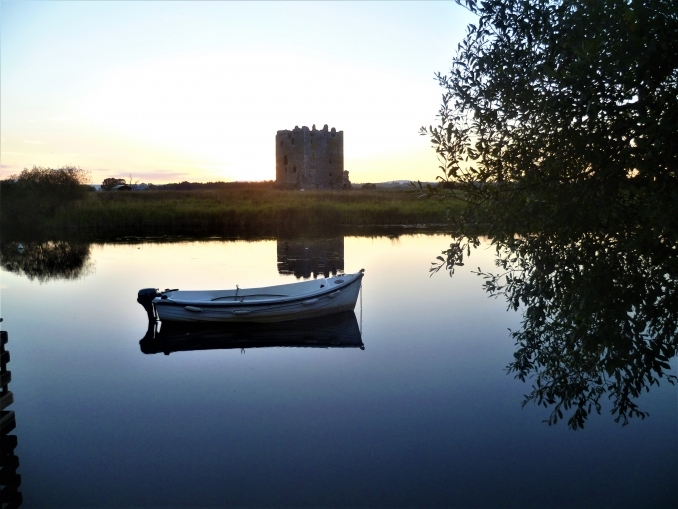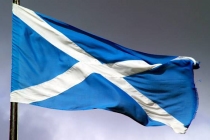Threave Castle

Threave Castle is located on an island in the River Dee (Scottish Gaelic: Dè / Uisge Dhè), about 1.6 miles west of Castle Douglas, Dumfries and Galloway, Scotland (Scottish Gaelic: Caisteal Dhùghlais, Dùn Phrìs is Gall-Ghaidhealaibh, Alba). This castle was built in the 1370's by Douglas the Grim. It was clearly built with a high degree of security in mind. It is made up of a five storey keep, with eight feet thick walls surrounded by a curtain wall.
Archibald Douglas (1320-1400) was Third Earl of Douglas and later became Lord of Galloway. He was the illegitimate son of Sir James Douglas, Lord of Douglas (d. 1330). The Black Douglas dynasty (a name taken from his dark complexion) dominated southern Scotland between 1388 and 1455. Archibald was made Constable of Edinburgh Castle in 1361, a position along with Sheriff of Edinburgh he kept until 1364. In that year he was appointed Warden of the Western March. At the time the English held Annandale, which made up a large part of his new jurisdiction. He subsequently carried out many raids against the English, successfully ousting them from Annandale completely by 1383.
Archibald Douglas the Third Earl died in 1400 at Theave Castle. He was succeeded by his son the 4th Earl, who was married to Princess Margaret of Carrick and was the daughter of King Robert III of Scotland. Archibald Douglas the 4th Earl was killed in 1424 at the Battle of Verneuil in Normandy during the Hundreds Year's War, when at that time Scotland was in alliance with French forces against the English. His son inherited the title and became the fifth Earl until his death in 1439. A sad fate then awaited his son William Douglas, who was murdered at Edinburgh Castle at the age of 16 years. Behind this was said to be his great-uncle James Douglas, the Earl of Avondale, who then gained the title of Earl. However, the castle and title of Lordship of Galloway went to the murdered William Douglas's sister Margaret (Fair Maid of Galloway).
Margaret eventually married her cousin William Douglas, 8th Earl of Douglas. He reinforced the castle. However, he came unstuck when he imprisoned and murdered Sir Patrick Maclellan of Bombie, Sheriff of Galloway against the orders of King James II of Scotland. It is said that Patrick Maclellan was hung from the granite block that protrudes above the gateway of the castle and can be seen today. Anyway, it was an event that would lead to the downfall of the Black Douglas line. The 8th earl was mudered by James II at Stirling castle in 1452. The 9th Earl James Douglas (brother of William Douglas) was the last of the Black Douglas's. In 1455 he rebelled against James II, but eventually their last stronghold, Threave Castle, fell. James Douglas lost his titles and the right to pass them on to his direct kin in 1455. His lands and estates were forfeit to the crown. The lordship of Douglas went to the rival Red Douglas 4th earl of Angus.
Our visit to Threave Castle was in the late summer. The sun was beginning to set west behind the castle which cast sharp reflections on the waters surrounding the site. It is a beautiful place to visit. It is off the A75 road west of Castle Douglas (Scottish Gaelic: Caisteal Dhùghlais). There is about a 10 minute walk through countryside paths to the castle, which then needs to reached by a short boat trip across the river. Opening times are from 1 April - 30 September, daily, 9.30am to last outward sailing at 4.30pm. Last return sailing at 5.00pm. October (closed Nov-Mar) 1 - 31 October, daily, 9.30am to last outward sailing at 3.30pm. Last return sailing at 4.00pm. However you walk along the path which takes you opposite the island where the castle is located throughout the year and which allows great views of the site.
Getting there
The site is on an island in the River Dee west from Castle Douglas/Caisteal Dhughlais in Dumfries and Galloway.
Celtic nation:
- Scotland
Itinerary:
- Scotland Dumfries & Galloway
Place type:
- Castle
















